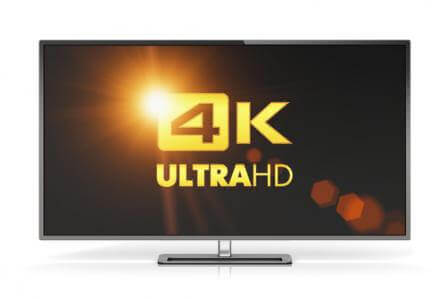Top 5 Gadgets to Make Your Life Easier in 2016
A guest post from eBay’s Stewart Wolpin about the top gadgets to make your life easier this year.
It’s the 21st century, a time that for many represented the magical future of The Jetsons, 2001: A Space Odyssey, and Back to the Future Part II. While most of us don’t yet live with a smart-alecky robot housekeeper, this year’s Consumer Electronics Show in Las Vegas introduced us to some products that are going to make life a lot easier and more enjoyable in 2016. Here’s what you need to know about five of our favorites.

1. 4K UHD TV
Our condolences if you already spent mucho dinero on a 4K TV. To put it kindly, we’re afraid it’s not state-of-the-art. But 2016 4K UHD models just unveiled at CES last week are worth the investment. They should now include HDR—High Dynamic Range—technology, often supplied via Dolby Vision, which vastly increases contrast and color to make details visible that were not visible before. To see the benefits of HDR, which will actually be more visible than the quadruple resolution boost from standard HDTV, you need a UHD TV with HDMI 2.0a jacks. If you have a home theater system, you’ll also need a new receiver (sorry) with HDMI 2.0a jacks.
TIP: Don’t buy a 4K less than 65 inches. It’s simply impossible to see the resolution difference between 4K UHD and 2K HDTV in TVs any smaller from a normal viewing distance.
2. LED Smart Bulbs
Over the last year, LED light bulbs have plummeted in price, but even when they were $25 each, they were worth it since it’s doubtful you’ll ever have to replace it. But the latest LED bulbs do more than light. Inside each LED bulb is essentially a computer that can perform a variety of functions. All “smart” LED bulbs can be programmed to go on and off at specific times and many, like the TikTeck 40-watt equivalent LED smart bulb (late February, $9.99), which can be scheduled and can glow in millions of colors.
TIP: Make sure your smart LED works well with others. While the TikTeck bulb is cheap, it will only work with its own pending app, while the admittedly pricier Philips Hue (two-bulb starter kit, $79.99) can be voice-controlled by Apple’s Siri, Amazon Echo, various Android voice-control apps and Microsoft’s Cortana.
3. Bluetooth Headphones
You’re lying in bed with your snoozing spouse but you want to watch TV. Sure, there are wireless TV headphone systems you can buy, but these are bulky and clunky and often don’t work well. But now there are Bluetooth solutions: the MEE Audio Connect ($59.99) and the pending Riva RivaCast ($79.99, April). What’s the big deal? Up until now, you couldn’t use Bluetooth headphones for TV listening—there was a “latency” issue, which means the lips and sound wouldn’t sync up. MEE Audio and Riva seem to have nearly solved this vexing problem (MEE Audio reports “low” latency), making private wireless TV listening much easier.
TIP: Use an optical audio cable for better digital sound. Unfortunately, the MEE Audio Connect doesn’t include one and, as far we know, Riva won’t either.
4. Smart Locks
Two years ago, there was no such thing as a smart lock. This year, however, the smart home section of CES was filled with clever smart locks that let you open your door by gesturing your smartphone at it, touching it or even talking to it. The gorilla of the home lock business, Yale, will soon launch its first models: the Assure (early this year, $224.99) and the Wi-Fi-only Linus (due mid-year, price to be announced).
TIP: Considering the vagaries of wireless connections, we recommend you opt for a lock with a secondary ingress method, such as a keypad or an actual, old-fashioned key. You can buy an extra keypad for many heretofore wireless-only locks, such as the Apple HomeKit Siri voice-controllable August ($229), and the Schlage Sense Smart Deadbolt ($229), which has three operating methods: Bluetooth/app, Siri and a keypad.
5. Voice-Control Apps
Smart locks and smart LEDs aren’t the only smart gadgets that will respond to their master’s voice. A growing number of gadgets are adding voice control via Apple HomeKit‘s Siri through an iPhone or the Apple Watch, Amazon Echo’s Alexa ($179.99) or other voice-control apps. But there are three problems you’ll soon discover. One, the voice capability could be accidentally activated from an outside source. Two, your home could become a tower of Babel, with each gadget requiring its own wake-up phrase. Three, there’s a slight lag time between your utterance and the device reaction as the command works its way though the varying gadgets and their wireless connections.

Consumer electronics expert Stewart Wolpin reviews the latest technologies, attends CES annually and writes about consumer technology for eBay.
Images courtesy of Shutterstock.
